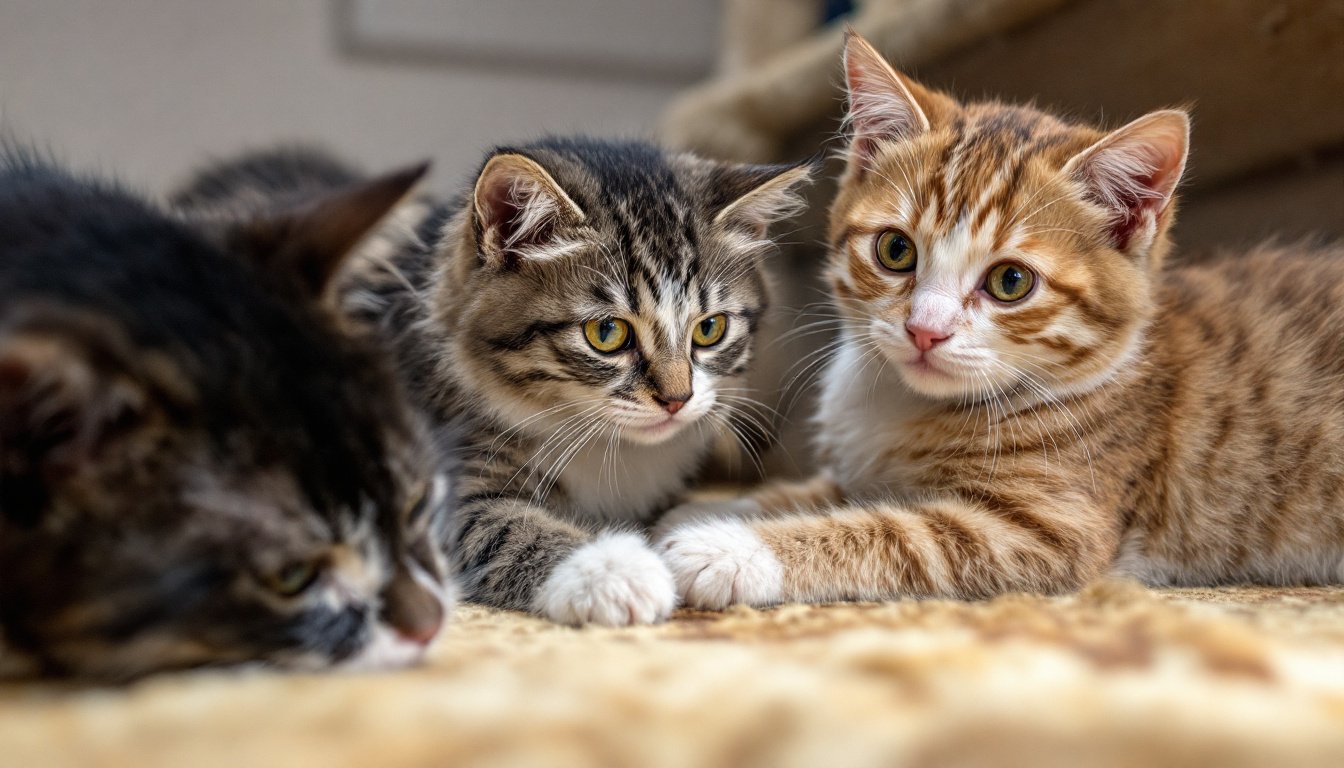Caring for a diabetic senior cat is a crucial responsibility that demands your attention, empathy, and action. Imagine your beloved companion relying on you, their unwavering trust placed squarely in your hands. You’re not just a pet owner; you’re a lifeline. Ensure your feline friend’s quality of life by combining dedication and knowledge. Act now to transform your home into a haven of comfort, managing diabetes with precision and love.
Imagine the joy in your senior cat’s eyes as they feel understood and cared for in ways that matter. Proactive care means administering insulin, monitoring blood glucose, and adjusting their diet to maintain stability. Rely on veterinarian advice, but also trust your instincts and intimate knowledge of your cat’s behavior. Embrace the routine while celebrating small victories. Each healthy day is a testament to your effort and care.
Don’t overlook the importance of diet. Optimal nutrition is key to managing your diabetic cat’s health. Consult a veterinarian to determine the ideal diet plan, focusing on high protein and low carbohydrates. Always ensure fresh water is available to support their kidneys and prevent dehydration. Get involved in the preparation, transforming meal times into moments of love and connection. Legions of other senior cats have benefited from this kind of committed approach; make yours one too.
Take charge by creating a stress-free environment. Stress can exacerbate diabetes symptoms in cats, and they look to your home for peace. Your senior cat deserves a serene and predictable environment. A cozy bed, a quiet corner, and gentle affection can work wonders. Pay attention to their needs and preferences, ensuring that each aspect of their environment supports their well-being.
Keep a diary of your cat’s health to notice slight but significant changes. Document insulin doses, diet adjustments, and any behavioral or physical changes. This record is indispensable for vet visits, ensuring precise and tailored care. You will find monitoring progress is more than just a task—it’s a transformative journey of understanding your cat more deeply. Every note you take is a step towards better health.
Don’t underestimate regular playtime. Even senior cats need exercise to maintain a healthy weight and prevent further complications. Interactive toys tailor-made for older cats can help stimulate their minds and bodies. Engage them with gentle games and ensure they’re only exerting as much as their health permits. The bond created through these playful moments is priceless.
Communicate often with your veterinarian and become their partner in your cat’s care. You’re both working towards the same goal: a healthy, happy cat. Share observations, ask questions, and consider potential treatment adjustments. By taking an active role, you’ll not only be prepared for any situation but also gain confidence in your caregiving abilities.
The Importance of Regular Veterinary Visits
Regular veterinary visits are crucial in maintaining your senior diabetic cat’s health. Don’t put off these appointments as early detection of any anomalies can significantly alter outcomes. A vet’s examination can identify underlying issues early, ensuring timely interventions. These visits build a comprehensive health profile and adjust the treatment plan if necessary, tailor-making it for your cat.
Connect with your vet to discuss strategies in cat diabetes management. Inquire about blood glucose monitoring techniques. You have the opportunity to learn how to efficiently and gently take blood samples at home. It’s an essential skill that brings you closer to your pet, minimizing stress and allowing you to respond swiftly to unusual spikes or drops.
Utilize these visits to fine-tune your cat’s treatment plan. The vet can offer insights into tweaking insulin dosages, dietary changes, or introducing supplementary treatments. An open dialogue allows for customizing care, adapting to your pet’s responses and ensuring they receive exactly what they need. Your involvement ensures every plan evolves right alongside them.
Ask about signs of hypoglycemia and how to respond. Know precisely what to do if your cat exhibits symptoms like weakness or disorientation. Your vet is your best resource in preparing you for various scenarios. Armed with this knowledge, you provide the assurance your cat needs, reinforcing their trust in times of discomfort.
Discover the importance of dental care, often overlooked but critical in diabetic cats. Infections and inflammation can affect blood sugar levels. Regular dental check-ups and cleanings form a crucial component of comprehensive cat care. Protect their teeth with vet-recommended products and practices, allowing your pet to enjoy their meals without discomfort.
Creating a Supportive Home Environment

Your home is your cat’s personal sanctuary, a safe space where they should feel comforted and secure. Take mindful steps to create an environment supportive of their special needs.
Start by keeping consistent routines. Cats cherish predictability, and this stability can help manage their stress levels and support overall wellbeing.
Revolutionize your space by gradually introducing calming elements. Soft, warm bedding that supports joints is a simple change but significant for senior cats. Consider adding cat-friendly furniture positioned at low heights to prevent injuries from high jumps. Your thoughtful design acknowledges their changing capabilities while preserving dignity.
Schedule regular grooming sessions, which play a vital role in your cat’s emotional well-being. Senior cats often struggle with self-grooming and appreciate the care and attention. Gently brush their fur, avoiding tangles and matting that could cause them discomfort or stress. These moments can become bonding experiences, reinforcing trust and affection.
Play soothing music or use pheromone sprays designed for cats to create a calming atmosphere. Soft music can reduce anxiety, while pheromones mimic the reassuring scents they associate with safety and happiness. These tools make your home a refuge amidst the challenges of living with diabetes, promoting relaxation and peace.
Establish accessible litter boxes to ease daily life. Place them in convenient locations with low sides to accommodate any mobility issues. Keep them clean, as diabetic cats urinate more frequently. A clean and easy-to-access litter box remains a fundamental part of creating an inviting and supportive living space for your cherished feline.
Managing Stress and Behavioral Changes
Monitor behavioral changes vigilantly. Shifts in behavior often signal distress or discomfort in diabetic cats. Being observant allows for early intervention. From increased aggression to apathy, changes need your immediate attention. Tackle these challenges head-on with kindness and understanding, consulting a vet if behavior doesn’t stabilize.
Connect with other cat owners going through similar challenges. An online or in-person support group can offer encouragement and practical advice. This community not only reassures you but provides innovative ideas and emotional support. Bonding over shared experiences validates your efforts and resolves doubts.
Engage in daily interaction with your cat. Establish trust by understanding their signals and respecting their moods. Positive reinforcement and gentle encouragement when socializing fosters a cooperative spirit. Consider using clicker training techniques to engage them in a respectful dialogue. These interactions strengthen bonds and contribute to your cat’s emotional health.
Incorporate calming techniques such as relaxing massages. Cat massage can alleviate stress and promote relaxation, introducing comfort on both physiological and emotional levels. Learning these techniques will enable you to address stress early, building trust and confidence in your ability to provide for their needs.
Recognize the power of gradual change. A sudden shift in routine or environment can increase anxiety. Introduce changes slowly, such as new food or medication, to minimize stress. Pay attention to their responses, adjusting the pace of change to align with their comfort levels. This mindful approach ensures their transition through diabetic care remains as smooth and stress-free as possible.
Staying Informed and Prepared
Stay informed and educated about feline diabetes. Use reputable online resources, attend webinars, or read veterinary journals. Equip yourself with the latest information and advancements to confidently apply the best practices in your home care routine. Knowledge is empowerment, making you a more effective caregiver.
Experiment with new strategies occasionally. Leave no stone unturned in finding what suits your senior cat best. Whether it’s innovative feeding techniques or a novel exercise routine, remain open to trying new methods. Document outcomes, maintaining flexibility and adaptability as integral parts of your strategy.
Invest in essential health-monitoring tools. Quick tracking of vital stats helps catch early signs of distress. Tools like glucose meters specifically designed for cats and smart collars that gauge activity levels provide real-time data. These devices offer valuable insights that can inform decisions and keep your cat’s health in check.
Create an emergency response plan. Know precisely what steps to take in case of a diabetic episode. Store emergency supplies and ensure everyone in the household is aware of your plan. Regular practice and quick repetition smooth the path to readiness. You become the safety net that acts swiftly in any crisis.
Ensure relationships with multiple veterinary specialists to cover various needs. Your primary vet is essential, but sometimes specialist insights can make a difference. They offer tailored advice in areas like endocrinology or nutrition, ensuring every aspect of your cat’s well-being receives the attention it deserves.
Bestselling Products for Diabetic Senior Cats
Final Thoughts: Caring with Confidence
Caring for a diabetic senior cat is not without its challenges, but it is also one of the most meaningful acts of love and loyalty you can offer. With the right tools, a strong partnership with your vet, and a heart full of patience, you’re giving your feline companion the comfort, stability, and dignity they deserve in their golden years. Every moment of care becomes a powerful expression of your bond. Stay informed, stay compassionate, and know that your dedication truly makes all the difference.








